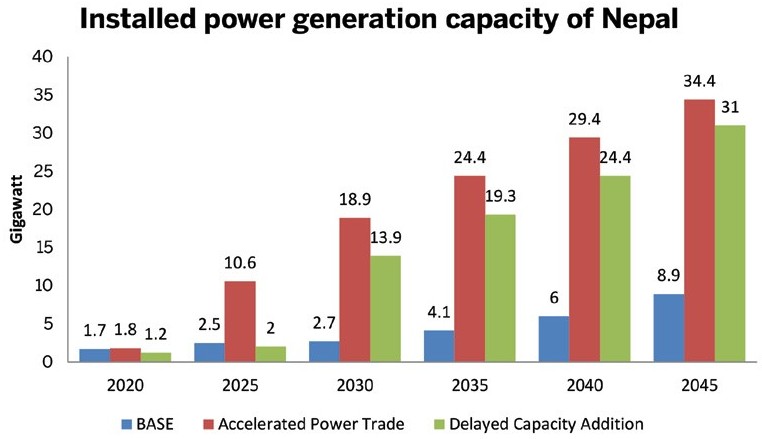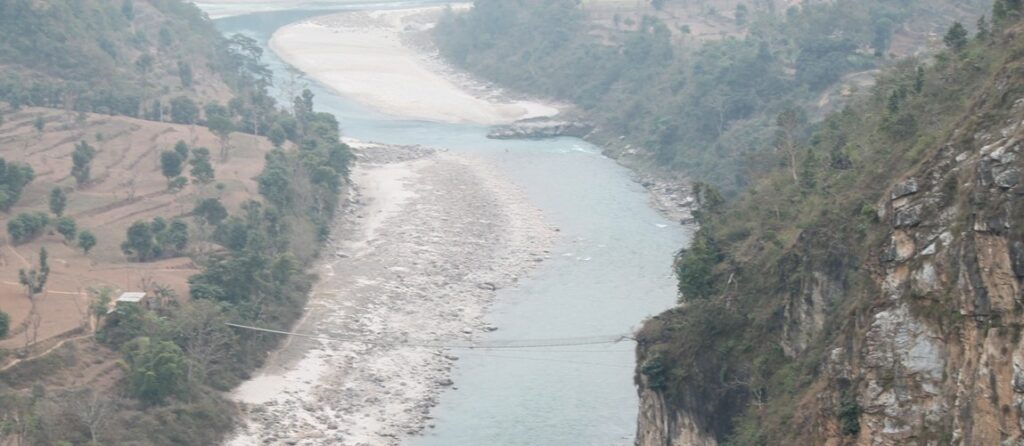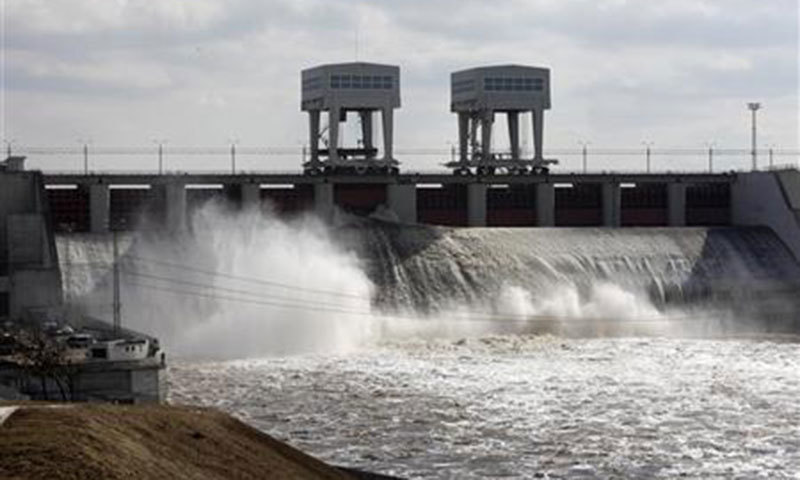Nepal the Country situated on Himalayas has the capacity to generate revenue up to Rs 310 billion a year in 2030 and as high as Rs 1,071 billion per year only if the county could harness its natural resources by harnessing its hydro-power potential alone.
In order to harness this quantum amount of revenue the country needs to invest initially upto Rs 2,612 billion in between 2012 to 2030 and double its investment by 2045 says “Economic Benefits from Nepal-India Electricity Trade”.
The generated hydro power would be sold to India alone and investment in hydro electric projects for cross-border power trade will not only benifit Nepal, but India as well and will benifit the mutual co-operation between the countries.
“The electricity imported from Nepal will help to meet the evening peak demand when solar plants cannot generate electricity. This will also help India to replace thermal power generation based on coal with clean energy, which will not only cut down India’s carbon emissions, but global emissions as well,” says the report prepared by India-based Integrated Research and Action for Development under the South Asian Regional Initiative for Energy Integration Programme of the US Agency for International Development.
“Investment in hydroelectric projects and export revenue contribute to higher gross domestic product,” says the report. This, in turn, will lead to higher per capita electricity consumption.
Nepal’s per capita electricity consumption stood at a low of 139 units per year in 2012, as against South Asian average of over 600 units and global average of around 2,800 units.
Per capita electricity consumption correlates well with the country’s social well-being as measured by the UN Human Development Index (HDI), says the report. An HDI of 0.8 or higher corresponds to consumption of almost 3,000 units of electricity per capita.
Nepal’s per capita electricity consumption is expected to rise to as high as 1,500 units by 2045 if the country is able to draw adequate investment to build hydroelectric projects with installed capacity of around 34 GW, the report adds.
Nepal, home to around 6,000 rivers, rivulets and tributaries, has the potential to generate over 40 GW of electricity through hydro plants. But as of now, the country’s installed capacity stands at less than 1,000 MW, whereas peak demand stood at around 1,385 MW in the last fiscal year, shows the Economic Survey 2015-16.
There is a big gap in demand and supply of electricity because Nepal has not been able to build relatively bigger hydropower plants since 70MW Middle Marsyangdi Hydroelectric Project, located in Lamjung, came into operation in 2008.
Nepal has now set an ambitious target of generating 10 GW of electricity through hydro resources in the next 10 years, which, many say, is achievable.
“Power shortage is the biggest binding constraint to Nepal’s economic growth. If we can generate more electricity, we could revive the manufacturing sector. This could absorb youths who want to move away from subsistence agriculture, reducing outflow of workers to various labour destinations,” Swarnim Wagle, member of the National Planning Commission told the programme held to launch the report.




